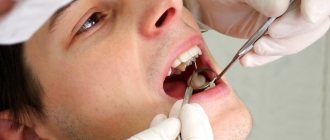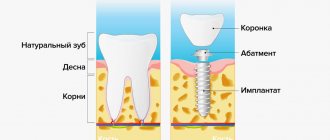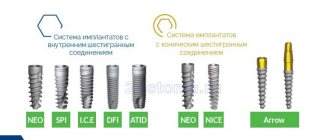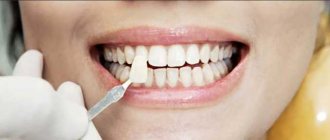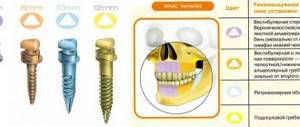All equipment used in dentistry can be divided into several types. It is convenient to use the following categories:
- Dental units, chairs
- Dental handpieces and micromotors
- Dental compressors
- X-ray dental equipment
- Dental peripherals and additional equipment
- Dental lighting
- Disinfection and sterilization
- Dental furniture
Dental handpieces from time immemorial
The history of the development of dental handpieces as an independent tool designed to convert the energy of a compressed air flow, rotation of a micromotor or electric current into the movement of a dynamic working tool fixed in the handpiece began in ancient times with a primitive bur, which was driven by a rope-arc stretcher.
In subsequent centuries, doctors attempted to create a tool suitable for preparing teeth, but lack of knowledge and the low level of technical progress did not give them a chance. And only in the middle of the 14th century did things get off the ground...
How it was in the 19th century
The prototype of a dental handpiece with a fixed steel bur can be considered the first automatic drill, powered by a spring mechanism that wound up for two minutes. This invention, made in 1864, belongs to the English doctor George Fallows Harrington. The bur speed reached 100 revolutions per minute, but the design was extremely inconvenient for the doctor. In the early 70s of the 19th century, American dentist James Morrison patented a drill with a foot pedal drive, where a sleeve with a tip was put directly on the output shaft and the torque reached 2000 rpm. It was this design that not only marked a revolutionary breakthrough in the development of dental equipment, but was also actively used in medical institutions in developed countries until the first quarter of the 20th century.
Additional dental equipment
For treatment to be effective, it is necessary to make a correct diagnosis. A wide variety of equipment types are used for these purposes:
- a radiovisiograph is an electronic device that allows you to display an x-ray image of a tooth directly on a computer monitor, i.e. you can obtain an image almost in real time;
- systems that allow teeth whitening;
- An apex locator is a special instrument that is used to measure the length of root canals.
The dental office must use sterilizers (autoclaves, dry heaters, quartz units) - equipment necessary for removing microorganisms from dental instruments.
Contact us: we will answer any questions about the equipment. We will help you check the current condition. We will conduct joint remote diagnostics. Or we’ll come for a full on-site inspection.
Russia, XX century
In Russia in the 30s of the 20th century, with the active development of dentistry as a practical discipline, industry began to produce several types of dental machines in which the dental handpiece was already a separate part and performed the same functions as the most modern handpieces. Only the speeds are incomparable: straight and contra-angle handpieces of those years had speeds from 3,000 to 30,000 per minute, the turbine handpiece invented in 1957 reached 45,000 rpm and was in great short supply, and the modern turbine handpiece reaches 500,000 rpm.
Straight and contra-angle handpieces
Straight handpieces are low speed. A conventional handpiece paired with a micromotor provides bur rotation speeds from 1000 to 30,000 rpm. Due to certain design features, they are most often used in surgical and orthopedic practice, as they allow significant pressure to be applied to the cutting tool without vibration. For comparison: the standard pressure on dentin for a steel bur at a rotation speed of 18,000 rpm is 500 grams, and for a tungsten carbide bur at 450,000 rpm is 2 grams. . Dental technicians also work with them in the manufacture and fitting of dentures, implants and other orthodontic structures.
Contra-angle handpieces are also low-speed and have a wide range of bur rotation speeds, making them a versatile tool. Contra-angle handpieces are used by dentists of all specialties. Its shape is convenient for working in hard-to-reach areas of the oral cavity, it can withstand significant lateral loads without vibration and easily works with various cutting tools. The following types of contra-angle tips are distinguished:
- Standard contra-angle handpiece with 1:1 gear ratio and bur rotation speed of 1,000 - 40,000 rpm. (blue markings).
- The overdrive contra-angle with gear ratios from 1:2 to 1:10 reaches speeds of 5,000 - 230,000 rpm. (red marking).
- Reducing tips have reduction ratios from 4:1 to 20:1 and speeds from 2,000 to 10,000 rpm. (green marking)
Straight and contra-angle handpieces from all manufacturers have a standard micromotor mounting (ISO 9001). According to the cooling system, tips are distinguished:
- No cooling. They are used extremely rarely and only for low speeds due to the risk of overheating and damage to enamel and dentin.
With external cooling. Used mainly in dental surgery.
With internal cooling. Used with air and electric micromotors and is the most common and effective type of cooling.
The backlight can be implemented through fiber optics or a built-in LED and light generator.
Device of the dental assistant unit
Modern auxiliary units are designed in such a way that they can be controlled (if necessary) by the doctor himself. At the same time, the possibility of control for the nurse is also provided in many installations.
What does the assistant unit consist of?
- valve body
- vacuum cleaner
- aspirator / saliva ejector
- spittoon/sink
Hydraulic unit
— purification system, multi-stage water treatment, water supply. Can also be used to store distilled water in the unit
Saliva ejector/aspirator
and
a dental vacuum cleaner
are technically very similar systems and can sometimes even be connected to the same compressor (but more often, different units are used for these tools).
Saliva ejection systems can be found much more often; they are found in many installations. At the same time, a portable system is also used, which is not technically a part. installations.
How does a saliva ejector work?
The saliva pump directly includes the compressor itself, which provides vacuum supply/aspiration, a system of tubes, filters, valves, a power unit, its own control panel, and a connection system to the general system of the dental unit.
Stationary or rotating sinks/spittoons are also now available in most installations, but the standard allows them to be replaced with disposable kidney-shaped containers.
The design of a shadowless lamp, with the exception of the method of attaching it to the dental unit itself and the ability to control it from a common panel, is no different from conventional shadowless medical lamps.
Dental compressors use a special type of dental compressor design to ensure maximum silence during operation.
The doctor's unit can be equipped with additional tools:
- a scaler (air or electric) is a device that allows you to carry out a number of dental procedures completely painlessly, but the main thing is to clean the enamel from plaque;
- a physiodispenser is a multifunctional device that can be used to solve many surgical and therapeutic functions, most often for implantology.
- Polymerization dental lamps - for working with a special type of dental materials that require polymerization.
Turbine tips
In clinical practice, turbine handpieces are most often used by dental therapists. Turbine tips differ significantly from angled and straight tips in their technical characteristics. There are two main factors:
- High bur rotation speed, which is 150,000 - 500,000 rpm.
- Low mechanical power, due to which increased force on the tip leads to a decrease in the speed of the bur and its possible stop, as well as to rapid wear of the rotor group.
Working with a turbine handpiece requires a certain skill and constant control of the pressing force, since excessive or insufficient force on the drill reduces the efficiency of cutting hard tissue.
How is the management of a dental unit structured and organized?
The design of the control unit of the dental unit
, as a rule, is divided into two parts - switches and a small control panel are in the doctor’s module.
The pedal of the dental unit is a separate external unit. Often, the pedal can be used to control the position and tilt of the chair, the speed of rotation of the instrument, and other aspects of the operation of the dental unit. The functional pedal simplifies the doctor’s work as much as possible, freeing his hands for examination and therapeutic manipulations.
How does the pedal work and what does it consist of?
Structurally, the pedal consists of a multi-position switch (or smooth regulator) and a force/pressure level reading unit. The pedal is connected by cable to a separate connector, which is very convenient, since if necessary, the pedal can be disconnected for repair/maintenance/cleaning or temporary replacement.
Connection Standards
The turbine tip can be directly screwed onto the mouthpiece of the installation hose or you can use a quick-release adapter to which the tip can be attached by simply snapping it into place. There are five standards for hose connections, the most common being the 2-channel Borden, 4-channel Midwest (non-illuminated), and 6-channel Midwest LUX with fiber optics. As a general rule, if you want to use quick-release adapters, then you need to buy them of the same brand with the tip.
Head dimensions
Turbine tips are available with heads of 3 sizes:
- Standard head (std). A universal model for therapeutic treatment.
- Small head (mini). Designed for children's use and light work that does not require pressure on the bur. The power is slightly less than standard.
- Large head (midi). Mainly used in orthopedic practice, it has increased power and bearings with a large margin of safety.
Illumination of the working area is implemented in the same way as in straight and angled handpieces: through fiber optics or a built-in LED with a generator. The bur clamp is most often push-button, but inexpensive models may use a latch or a special key. Tips are available with ceramic and metal bearings. Ceramic bearings are more expensive and more durable, but with proper care, metal bearings are just as durable.
Our recommendations
So, to select a specific turbine tip model, you should pay attention to the following points:
- Hose Connection Standard (Borden, Midwest, Midwest LUX, Siemens)
- Presence/absence of quick-release adapter
- Head size (std, mini, midi)
- Bur clamp type (button, latch, key)
- Lighting (fiber optics, built-in light generator)
- Cooling (1-point, 3-point, 5-point spray)
- Bearings (ceramic, metal)
TG 656 EASY
TG 656 EASY
An elegant and powerful turbine handpiece without backlight, with a push-button bur clamp and a side 5-channel cooling system from the legendary company CHIRANA Medical - a world-famous manufacturer of high-quality medical equipment since 1935 in Stara Tura (Slovakia).
TG 656 EASY is a handpiece with air supply and is intended for drilling tooth enamel, dental cavities and grinding crowns.
The handpiece has a 5-channel cooling system with push-button fastening. The casing is made of brass with surface treatment. Connection type using 4-ISO MIDWEST.
The main advantages of the handpiece are low weight, easy movement in the patient’s mouth and ventilation of the tooth cavity. At the same time, despite its dimensions, the device is quite powerful.
Characteristics:
- Working pressure: recommended 0.21 to 0.23 MPa
- Speed: from 342,000 to 418,000 rpm. /minute
- Bur stopping time: up to 2 seconds. An undeniable advantage in terms of patient safety and hygiene, because when the rotor rotation is quickly stopped, it is impossible to harm the patient, and microscopic contaminants from the patient’s mouth are not sucked into the turbine head
- Air consumption: 38 l/minute ±2 l/minute
- Used burs: shank diameter 1.59-1.6 mm, length maximum 25mm
- Cutting diameter maximum 2.1 mm
- Collet force: minimum 35 N
- Sterilizability: AUTOCLAVE 135°C
- Power: 18 W
- Noise level: 60 dB
- Hose connection: ISO 4 MIDWEST
- Bearings: ceramic (made in Germany)
- Spray: 5-jet spray
- Weight: 46 grams
WHERE CAN I BUY
